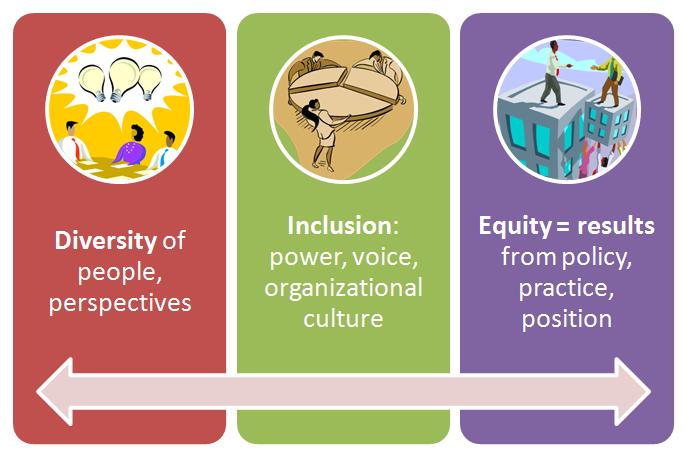Posted in Equitable Initiatives
January 22, 2019
“The rush and pressure of modern life are a form, perhaps the most common form, of its innate violence. To allow oneself to be carried away by a multitude of conflicting concerns, to surrender to too many demands, to commit oneself to too many projects, to want to help everyone in everything, is to succumb to violence.”
The quote above has been cited every now and then over the past dozen years or so that I have been with IISC, including a later line – “The frenzy of our activism neutralizes our work for peace.” Some combination of these words seem to come to mind and lips more frequently as many of the organizations and networks with which we work are are dealing with oppressive dynamics of overwork and urgency, whether they identify as activist or not.
These dynamics are increasingly recognized as an aspect of white dominant and supremacist culture and hyper-capitalist fervor that reduces many people to “producers” in the workplace and extracts as much labor as they can give. In our race equity and social change work, we see this as part and parcel of the structures that must be named and addressed for justice, liberation and sustainability to be realized.
In a recent workshop with an organization we are supporting through a two-year race, equity and inclusion transformation process, we invited the predominantly white staff into a dialogue circle to unpack their self-identified culture of overwork and urgency, to look more deeply at what they are gaining from this (and who in particular gains most), what they are losing (and who loses most), and what it would take to do commit to creating something different. Here is some of what we have heard, aspects of which are being echoed in various other organizations, networks and communities (curious to know what resonates): Read More
November 6, 2018
“Community exists when people who are interdependent struggle with the traditions that bind them and the interests that separate them so they can realize a future that is an equitable improvement on the past.”
-Carl Moore (quoted by Dr. Ceasar McDowell)
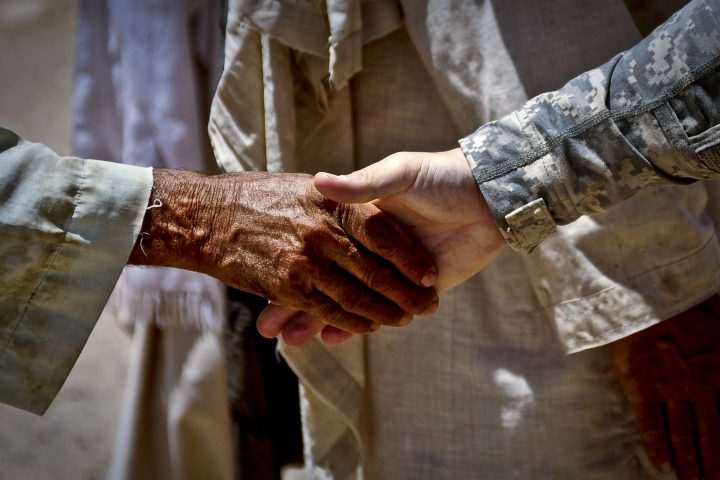
A couple of weeks ago I attended a gathering of network thinkers and doers pulled together by Steve Waddell and Diane J. Johnson, on behalf of the Emerging Network Governance Initiative. Our time together was designed for us to (1) get to know one another better and our respective work (because that’s what network weavers do) and (2) explore possibilities for collaboration to bring different network processes and forms of governance to bear at various scales in the face of the struggle/failure of traditional government to hold and do justice to demographic complexity and address a variety of social and environmental issues.
We spent some time early on unpacking the words “emergent,” “network” and “governance.” While we did not come to final agreement on set definitions, here is some of what I took from those conversations.
Emergent and emergence refer to the dynamic in networks and in life in general through which novelty arises in seemingly unexpected ways.
What is emergent is not planned per se, but rather surfaces through complex interactions between parts of or participants in systems.
Read More
October 2, 2018
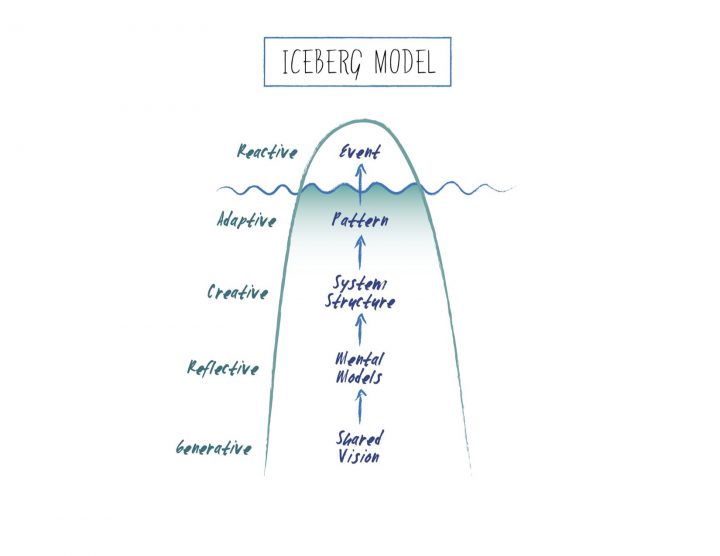
I have been working with a national environmental health and justice network for the past few years, and at a recent retreat, the core leadership team wrestled with a set of criteria for guiding the creation of equity-grounded, whole network-mobilizing and systems-shifting strategies. This is where we landed:
Required
- If successful, the strategy will move us towards our long-term systemic goal.
- The strategy is fundamentally collaborative in nature.
- The strategy is consistent with network’s values.
- The strategy does not advance the network at the expense of other key constituencies, partners, or social justice movements.
- The strategy is worth the expenditure of time, resources and opportunity costs of pursuing it.
- The strategy aligns with the Jemez Principles for Democratic Organizing.
Strongly preferred
- The strategy connects to a clear pathway on our systems map.
- The strategy plays to the strengths and capacities of current network members.
- The strategy broadens and deepens connections with impacted communities and constituencies.
- The strategy will build leadership within the network, with a particular emphasis on building leadership among the most directly impacted communities and constituencies.
- The strategy is likely to bring new funding and capacity around the network’s goals.
- The strategy will increase our learning and understanding of promising practices for systems-based collaborative networks.
Bonus points
- The strategy is likely to attract media attention to network members and/or advance our network narrative.
- The strategy would leave the network better positioned to move forward future initiatives.
- The strategy will increase the network’s reputation for innovation and/or effectiveness.
- The strategy will increase the network’s standing with key thought leaders and/or policymakers.
- The strategy presents an opportunity to collaborate with desirable new partners.
What resonates? What would you add that you have used as criteria for determining systemic strategies for collaborative networks?
September 28, 2018
At IISC, we are using guided meditations to spark transformation in the hearts and minds of participants in our facilitation and training rooms.
This is one I offered to thirty Black leaders brought together by the Department of Health and Mental Hygiene in New York City this summer. They were asked by First Lady Chirlane McCray, wife of NYC Mayor Bill de Blasio, to develop recommendations to increase the numbers of Black mental health providers. But our job in the end was so much more. It was helping them to discover ways to re-imagine mental health care for Black communities, and to encourage Black people to go into mental health fields to free Black people from the emotional and spiritual binds of pain rooted in systemic and historical injustice.
It was the deepest honor to create and share this meditation with the group as I lost my mother in 2002 to mental illness and the health care system that “treated her”.
Get comfortable
Anchor your feet and back
Breathe natural breaths at your own pace
See what’s on your mind about today
See your obligations outside of this room and let them float past you and away
Call on your images of your ancestors
See the faces of your family
Present
And Past
Think about the history of Black people
What images do you see of pain?
Of pain as they face hardship? As their mental health deteriorates?
Of triumph?
As they triumph over, and their mental health improves and sets them free?
What supports did they have to help them heal and achieve wholeness?
Who helped them?
How?
Who helped you in times of need? In times of mental burden and stress?
How?
Thank your ancestors
Thank yourself
Breathe once again those breaths of life
And come back when you are ready
July 11, 2018
Many articles have been devoted to running effective meetings that build collaboration among teams, yet many fail to discuss the hidden element that can destroy a meeting almost without fail.
Power dynamics – the ways in which power works in a setting – can either sink a meeting and negatively impact relationships for years, or produce more shared power and capacity to get things done. A lot of the difference comes down to how we attend to power dynamics in meetings, how well we plan our meetings, how well we determine what happens within and outside of meetings, and how well we facilitate in the moment.

In every organization, there are people who hold formal power and informal power. Formal power is attributed to someone by virtue of their title or position in the organization. People carry informal power if they have influence over others or their organization, either because of their experience, force of personality or persuasion, unearned privilege, or because they have strong relationships with decision-makers and peers. Power is also deeply influenced by diversity and equity dynamics. In most Western societies today, many decisions in organizations are still controlled by people with certain backgrounds: over 40, male, white/European, heterosexual, and middle class and wealthy people. Many feel empowered to lead, speak, and make decisions by virtue of the standing society gives to them on the basis of their background. They get a lot of practice leading and people are acculturated to following and respecting them.
Power — the capacity to get things done — is neither positive nor negative in and of itself. It’s all about how we construct, reconstruct, and practice power. Individuals can exercise their power in healthy ways if they stay focused on making space for others and growing power to achieve positive outcomes by building “power with” others. Individuals and groups can exercise their power in unhealthy ways if they are focused on establishing “power over” others or concentrating power in a few.
At IISC we have made some key observations about power in meetings:
- Power dynamics are always present in meetings whether we see them or not.
- Every meeting is a chance to build a group’s power and transform power dynamics. It’s important to design and facilitate meetings to create opportunities for power to be shared and openly discussed.
- Meeting designers and facilitators must attend to formal and informal power and the dynamics that come along with it.
- Meeting facilitators should be mindful of and acknowledge their own power and enact it in a way that builds the power of the group.
- Every element of meetings needs preparation to make power and decision-making transparent. Consider questions like: Who is at the meeting and who is not? Why or why not? What’s on the agenda and what’s not on the table for discussion that should be? Who will be making the decisions that flow from what will be discussed (both in the room and beyond)? Who plays which roles and why? What work will happen outside of the meeting? What information from the meeting should be shared and with whom?
So, what are some ways to attend to power dynamics in meetings?
- Assume power dynamics are always present in meetings. Design your meeting agenda to include multiple voices and perspectives. Lightly encourage people to step forward to lead and participate, especially if they have less power in the organization either because of role, positional status, race, gender, or other factors. Encourage people with traditional forms of formal power to do more listening than speaking.
- Build a culture of collaboration in meetings. Think of meetings as an opportunity for a team to build relationships, learn leadership, design good processes, and counteract unhealthy uses of power. Design your meetings for relationships, joy, and creativity. Good things will follow! Always build an agenda that allows people to first interact on a human basis, such as starting with opportunities for people to do a “check-in” to share how their day or week is going or to learn more about each other on a personal level. Ask people a question that surfaces their personal and professional purpose. Encourage honesty, vulnerability, and calling people “in”, instead of calling people “out”. Spread a little business love around the room, creating openings for people to feel heard and noticed, and to experience a sense of belonging and interconnectedness.
- Openly discuss power in meetings. Discuss openly with your team the question, what would be the benefits to our group if we shared power? Remind them that power is not a finite pie; rather, it can be infinite, expanded, and shared among people and leaders. Prompt them to explore how they can share “power with” each other instead of “power over.” Make a list of meeting agreements the group will use to share power. Ask people to monitor the agreements and be brave enough to intervene if people are not practicing them. Make a list of “power over” moves, so people learn the behaviors that reinforce dominant voices and power and exclude others. Have people take mental note of who is speaking the most and who is not. Make sure your discussions of power go beyond yourselves as colleagues to the people or communities you serve. How are they “at the table?” How are their priorities, assets, and skills driving the discussion?
- Remember that power is a social construct. We can design spaces where individuals and groups experience their own and others’ power differently. Be proactive about ways to amplify the power of people who are typically at the margins of the conversation. Challenge the group to pay at least as much attention to the expertise that comes from lived experience (say, of poverty) as from formal theories and data. Flip questions on their head by asking “why not do things differently?” instead of “how can we work within given boundaries?” Ensure that people who are affected by the issues you’re working on are at the center of the conversation and have meaningful roles in the work over time (inside meetings and beyond).
- Use your role intentionally and thoughtfully if you’re the meeting facilitator. Don’t dominate the discussion. Don’t come up with all the ideas. Stay as impartial as possible, even though you can never truly be completely neutral. If you want to contribute an idea or experience, tell the group you are switching from facilitator role to express your view as an individual and then step back into your facilitator role. Examine who gets to facilitate meetings and who doesn’t. Meeting facilitators can change the outcome of the meeting just by how they design and run it. Rotating facilitation and supporting people to learn how to facilitate and run meetings distributes power and makes meetings more dynamic.
The skills of meeting facilitation with a lens to share power are teachable and replicable. At IISC, we share some of those skills through training and consulting. We have learned that meetings that are both well facilitated and that attend to power dynamics can transform groups into highly functioning teams with deeper purpose and intention for social change.
May 14, 2018
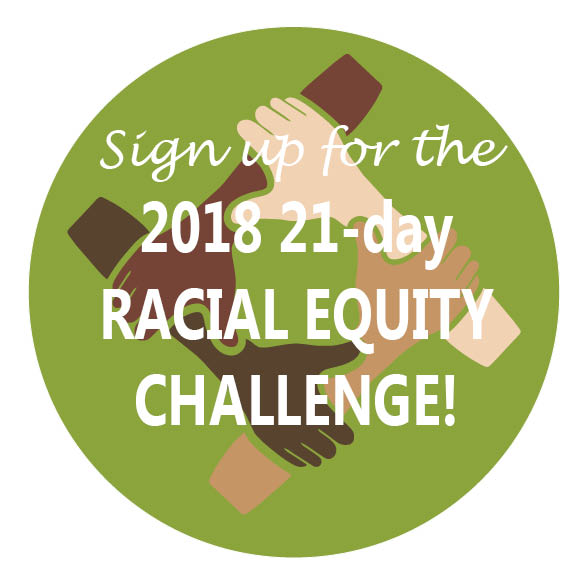 On April 22nd, the fourth annual 21 Day Racial Equity Habit Building Challenge wrapped up. This project with Food Solutions New England was originally conceived as a “network innovation” to spread and deepen the conversation about and commitment around addressing race and racism in food and related systems. This year the organizing team sought to go deeper, noting how much the national conversation has evolved in the past year. And we were heartened by the numbers (over 3,000 people from all 50 states and parts of Canada signed up) and by the quality of the conversation on-line and in different in-person venues where we met people who were participating. Certainly no one is under the illusion that the Challenge is enough, but we have heard that it is changing the way many see their work in food systems. Below you will find some of what was generously offered on-line in response to the daily email prompts and associated resources (readings, videos, audio clips).
On April 22nd, the fourth annual 21 Day Racial Equity Habit Building Challenge wrapped up. This project with Food Solutions New England was originally conceived as a “network innovation” to spread and deepen the conversation about and commitment around addressing race and racism in food and related systems. This year the organizing team sought to go deeper, noting how much the national conversation has evolved in the past year. And we were heartened by the numbers (over 3,000 people from all 50 states and parts of Canada signed up) and by the quality of the conversation on-line and in different in-person venues where we met people who were participating. Certainly no one is under the illusion that the Challenge is enough, but we have heard that it is changing the way many see their work in food systems. Below you will find some of what was generously offered on-line in response to the daily email prompts and associated resources (readings, videos, audio clips).
History of Race and Racism in the Food System: What is the history you hold in your head (and heart and body) about our current food systems?
“In my work at a non profit in the ‘good food’ movement, we constantly use language like ‘fix the broken food system.’ Reading these pieces on the historical underpinnings of racism in our food system illuminated for me just how much that statement (almost a throw away now) is situated within a racial caste system. To presume that ‘we’ must ‘fix’ a system ignores (by not naming) the racism present in that system. It lumps the goals of racial and food justice in with other, non-racialized issues (like soil health) also plaguing our current system, thereby continuing to perpetuate injustice through silence.”
“The consistent glorification of a food system, broken or fixed, imagined or real, that has systematically ignored the people that make it function, throughout the past and yet still in the present, is something I think I unknowingly participate in. Will naming this, calling it out, help us to change the structural racism that fuels this reality? How? I hope that by learning, studying, reflecting, and communicating that this group can indeed be somehow change-making, but it’s challenging to see a positive horizon when the change to be had is so large and primarily resides in legal, political and social institutions and structures. Forgive me for being still inside a state of feeling overwhelmed.”
The Colonization of Indigenous Land Rights and Food Ways: How does colonization continue to exist in our food systems and how can you support decolonization and celebrate indigenous rights and food ways?
“I just finished listening to The True History & Foods of Thanksgiving. My immediate reaction is shock and shame. I accepted Thanksgiving as an American celebration without ever wondering about its history. The podcast is a great conversation that educated me about how interwoven food, land, location, spirituality and culture are for some traditions within Native Americans. I wish we treated our lands and environment with the same care that many people were able to do before they were colonized.”
“In my state, treaties still continue to be broken with Native American communities, the most recent agreement being broken in 2015. State programs aimed to “help” are rooted in white supremacist ideologies. I think of Audrey Lorde when she declared, “For the master’s tools will never dismantle the master’s house. They may allow us to temporarily beat him at his own game, but they will never enable us to bring about genuine change. Racism and homophobia are real conditions of all our lives in this place and time. I urge each one of us here to reach down into that deep place of knowledge inside herself and touch that terror and loathing of any difference that lives here. See whose face it wears. Then the personal as the political can begin to illuminate all our choices.”
Read More
April 18, 2018
“Network entrepreneurs are keenly aware that they are few among many working across the larger system, and in this way they embody a special type of … leader[ship].

Image by tarotastic, shared under provisions of Creative Commons Attribution License 2.0.
This is the third in a series of blog posts that appear in their entirety on the Education Week website. In the previous post we considered how structure has implications for the extent to which a network or networked activity is able to leverage different kinds of net effects and create value for diverse participants. We also considered how structure has implications for both equity and how power is distributed. Another important consideration in how to create equitable benefit is what leadership looks like and how it plays out in and around networked activity.
The concept of leadership seems to be undergoing a rapid evolution lately. Especially in this “network age” there appears to be both a growing appreciation that leadership has always been about more than the singular and highly visible heroic individual, and that going forward, leadership must be upheld as much more of a shared and multi-dimensional endeavor.
“Leadership for this era is not a role or a set of traits; it is a zone of inter-relational process. Step in, step out.”
In much of the collaborative consulting work that we do through the Interaction Institute for Social Change, leadership (or what we at IISC often call Facilitative Leadership) is about “holding the whole.” That is, there is a need for groups, teams, organizations and communities to think more expansively about the state of a given complex system (community, economy, food system, organization, school, school district) and pay attention to what is required to support resiliency and/or change for more equitable and sustained benefit. In these situations, the traditional top-down images of leadership fall short.
In education, for example, we have seen hopes often pinned on seemingly superhuman teachers and principals who are brought in to “rescue failing kids and schools.” The assumption underlying such moves is that these extraordinary individuals will of their own drive and volition beat the odds and dramatically reverse the downward trajectory. This story may be the making of a box office smash, but in reality is met with mixed results at best. This is not to say that individuals cannot provide crucial sparks at important moments in organizations and communities. But holding out for heroic singular leadership ignores the systemic reality of what got us to where we are in the first place, and denies the more complex and connected response that is actually required.
“Leadership is helping to make the network smarter.”
Harold Jarche
Indications are that network leadership is at its best a dynamic, diverse, and multi-dimensional phenomenon. Many of those with whom IISC partners in the work of social and systems change understand this implicitly, and we have found it important to help them externalize and be more explicit about this by naming some of the roles that leadership can embody in a collaborative/networked world. Read More
April 16, 2018

At Passover, there is a song about being thankful for each thing we are blessed with. Dayenu means “it would have been enough.” It is a call to appreciate the small things and to recognize that they are enough. And yet, within the “enough” there is a simultaneous recognition that the first gift or step is not enough without the next one.
In a world where racism is rampant, and where the impacts are real – often deadly, even – is there an “enough” in terms of being collaborators for change? It feels like it is never enough when lives are at stake.
On the one hand, there is never enough until we have envisioned and called into being the liberated and equitable and pleasing community that allows us all to thrive. This reality requires a commitment that is bone deep. It is the kind of commitment that requires constant thinking and action to live into new ways. It is held knowing that upending racism and racist systems is something to die for.
On the other hand, each action, each change to the individual and to the system, needs to be celebrated. For that one moment, it is enough. As long as we know that a new moment emerges when more is needed, and the past action is certainly no longer enough.
What is the first step and what is the next one? For many white people striving to be collaborators, the work begins with learning and knowing and then shifting awareness, then teaching, then ultimately embodied anti-racism practice in relationship with other white people and people of color. Perhaps a move from external to internal; from pointing out the faults of others to seeing how, despite best intentions, we are each implicated in racist systems; from tight vigilance to looser living and correcting.
- Reading books and learning by black artists and intellectuals who have created parts of the world we want Dayenu
- Understanding the history of racism and how it got institutionalized in the US and globally Dayenu
- Bringing a new consciousness to my actions as I walk through the world Dayenu
- Naming racism in all-white spaces Dayenu
- Building authentic relationship across difference Dayenu
- Helping other white people along the journey through openness and kindness Dayenu
- Showing up as a vulnerable person who can acknowledge my mistakes and own my racism Dayenu
- Ongoing learning through books, workshops, conversation, community Dayenu
- Contributing to and investing in multi-racial community at work and at home Dayenu
- Putting my life on the line Dayenu
The work of a white ally or accomplice is never ending, to be sure. It requires a lot of effort. And yet, it should not be a slog. We are doing this for ourselves as much as for anyone else. We recognize that ending white privilege and white supremacy allows us to be full human beings as we disrupt the notion of superiority on which this country was founded.
In my work in trainings and coaching, I encourage both the ongoing effort and the need to celebrate.
Maybe this is one way to be gentle and joyful in our work for liberation – to celebrate each small step as if it were enough while also knowing that it is never enough until we are all free and that we need to want and to create more.
What does it mean to you to do equity work with both insistence and gentleness, step by step?
“Ours is not the task of fixing the entire world all at once, but of stretching out to mend the part of the world that is within our reach… What is needed for dramatic change is an accumulation of acts, adding, adding to, adding more, continuing.” – Clarissa Pinkola Estes
April 13, 2018

Everything grows.
Everything changes.
And you will be undone forever.
Pursuing racial equity and systems change is a forever equation. I am noticing that our clients and friends believe that if we just implement racial equity, diversity, and inclusion “the right way,” our organizations, movements, and networks will immediately become effective multiracial ecosystems that produce transformative results.
We will always be undone. People and systems – the very world we live in – are ever changing and reverting and that’s why I have to be honest that the work of racial equity will always be unfinished.
People are always coming in and out of our organizations, some with knowledge of our path to create racial justice and others completely unknowing and beginning the discovery of systemic racism. Even if we root out systems of injustice and racism in specific institutions or sectors, they will exist in other places and invariably slip back into our ecosystem. The world is encased in racial stratification. We can dismantle racism in one territory and it can spread elsewhere as people and their ideas travel.
Oppression cannot be fixed. It’s not a linear proposition. It swarms, grows, gets attacked at moments, dissipates, and then finds its way back into our systems as fearful ways of thinking and unproductive ways of doing. And because we are a species and planet dependent on each other, the chronic patterns of racism can reenter our minds and societies. We are imperfect people in deeply imperfect systems.
We are making progress but it’s not the kind where there’s a clear end in sight. We’re learning together. We’re trying new practices of shared power. We’re rooting out racist policies in our laws and organizations. Our systems are feeling the pressure because of our joint actions.
But we won’t do it “right” and we won’t get it “right.” We will be undone.
But don’t let this disappointment get in the way of persistent bold action.
We will have moments of clarity. Moments of seeing new possibilities. Months of progress in our leadership for equity and justice. Years of growth and learning. Examples of power shifting and sharing all around us. Detrimental laws defeated. It will feel like freedom, like less damage is around and inside of us.
Let’s see ourselves as equilibrium makers, re-introducing people to see the problem of racism once again, re-balancing power as the dynamics return, re-calibrating systems when they revert, revisiting change in ourselves and others with humility, and re-birthing our best nature and ideas toward liberation.
Each of us are needed to extricate the roots of racism. We can still be a constant catalyst for change all the while knowing that we will be undone.
November 29, 2017
Increasingly, social sector organizations are applying collaborative change frameworks and tools to engage in racial equity transformation. In a pattern reflective of the broader movement for racial justice, employees, often women of color in particular, are challenging organizational commitment to racial equity internally and programmatically. Often people who are ready to take action want to know what they can do to create space for the conversations needed to catalyze racial equity transformation.
The list of strategies below was generated by Marlon Williams, Ratna Gill, Madeline Burke and Kimberly Dumont, during our Fundamentals of Facilitation for Racial Justice Work workshop held in NYC earlier this month.
- Data: Use data to identify and initiate a conversation about inequities
- Training: Invest resources in training to staff to learn about racial equity and create the space for them to bring insights back to the organization
- Elevate Voices: Look for expertise throughout the organization’s hierarchy and give power to those with the capacity to lead, regardless of position.
- Personal Capital: Leadership and those with significant person capital can use if in service of prioritizing conversations about equity.
- Crisis: Incidents in the news that highlight the impact of our racial disparities can serve as a call to action.
- Personal Ownership: A commitment to racial equity should be owned by specific individuals throughout the organization’s structure.
- Outside Voices: Bring in outside voices to validate the need and urgency for having a focus on racial equity.
- Highlight the Loss: Identify the the risks or potential loss of not having a focus on racial equity.
Have you tried any of these strategies? Is your organization embarking on a journey of racial equity transformation? We can help.
June 7, 2017
A couple of weeks ago, IISC was invited to offer a post-conference session at the Collective Impact Forum Conference in Boston. The title of this 8 hour session spread over two days was “Advancing Racial Justice Through and Within Collective Impact.” This was an opportunity for Cynthia Silva Parker and Curtis Ogden to formalize our ongoing efforts to bring IISC’s core collaborative methods, frameworks and a variety of racial justice content and tools to the different elements of the Collective Impact framework.
We were heartened to see and hear the many conversations about racial equity during the main conference proceedings, and noted good and challenging questions and exploration about the fit between the Collective Impact model, such as it has been formally presented and understood, and community organizing and power building work. These conversations continued in some form or fashion during our session. Read More
May 8, 2017
“Clearly, we made some people uncomfortable. Good. For too long, our comfort has come on the backs of many who have been uncomfortable for a long, long time.”
–Niaz Dorry, FSNE Process and Network Team Member
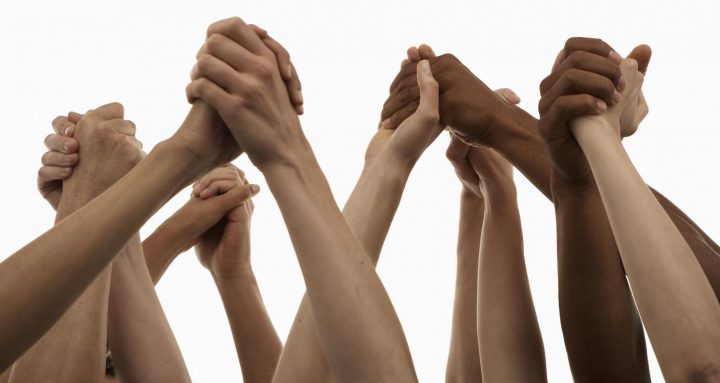
Food Solutions New England (FSNE) is a regional, collaborative network organized to “support the emergence of a New England food system that is a resilient driver of racial equity and food justice, sustainable farming and fishing, and thriving communities.”
For the past 5 years, IISC has supported FSNE to launch and structure itself as a formal network, as well as to concretize and evolve its core commitment to racial equity as it has become more diverse and inclusive and focused on systemic transformation. Over the winter, editorial staff from the Othering and Belonging Journal at the Haas Institute for a Fair and Inclusive Society solicited an article submission from FSNE to tell the story of why and how the network has operationalized its commitment to racial equity and food justice.
“While Othering processes marginalize people on the basis of perceived group differences, Belonging confers the privileges of membership in a community, including the care and concern of other members. As [john a.] powell has previously written, ‘Belonging means more than just being seen. Belonging entails having a meaningful voice and the opportunity to participate in the design of social and cultural structures. Belonging means having the right to contribute to, and make demands on, society and political institutions.'”
–Andrew Grant-Thomas, from Othering and Belonging Editors’ Introduction
The article was published last week under the title “Equity as Common Cause,” co-authored by El Farrell, Tom Kelly and Joanne Burke of the UNH Sustainability Institute (the convenor of FSNE), Karen Spiller of KAS Consulting and the Albert Schweitzer Fellowship (Karen is lead FSNE Ambassador) and myself, as network facilitator, with input and voices of many others, including Connecticut Senator Marilyn Moore, Julius Kolawole of the African Alliance of Rhode Island and Niaz Dorry of North Atlantic Marine Alliance. Read More



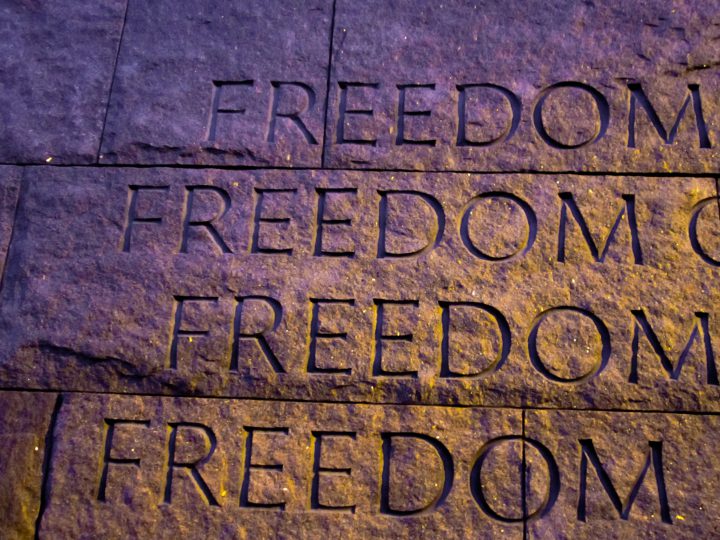
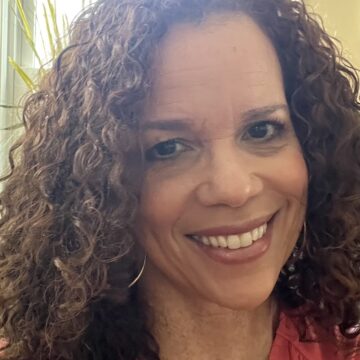
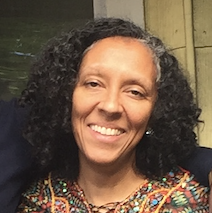


 On April 22nd, the fourth annual
On April 22nd, the fourth annual 




